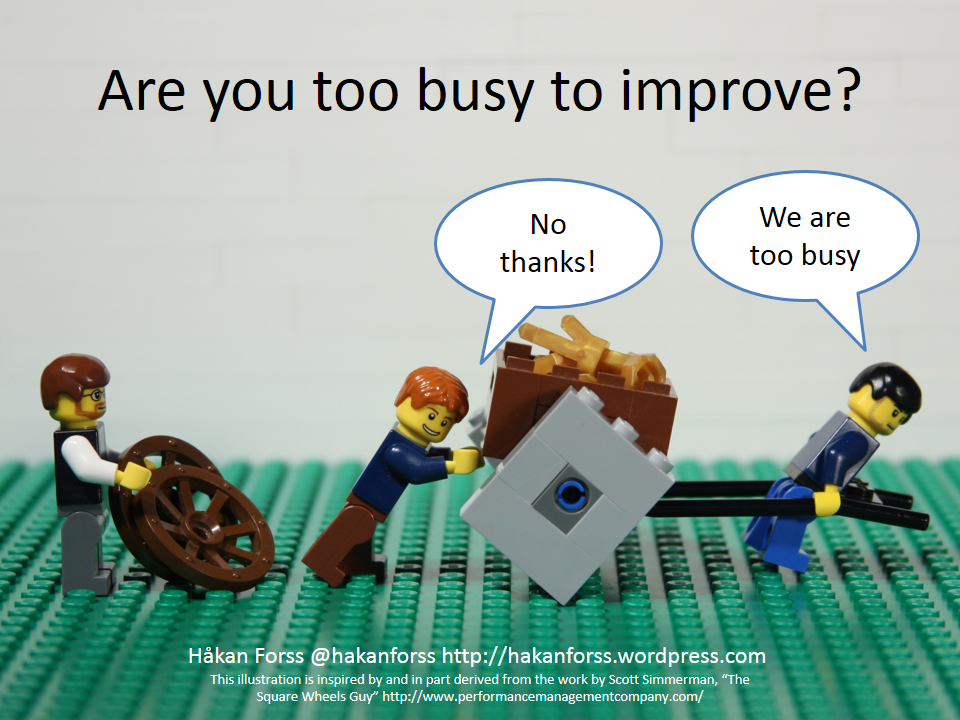The number of people I meet who tell me, “I don’t have time to make improvements to my work,” amazes me. “It’s all I can do to keep my head above water!” is often the point they drive home. Have you ever heard the voice in your head say something to this effect? A perceived barrier is very real to the person thinking it, and something needs to be done to counteract the paralyzing effect of these thoughts.
A paradigm is a mental map or pattern of how we view the world. Some paradigms help us (e.g., belief in respect for people) while others hurt us (belief that young people don’t care about doing a good job). The “I don’t have time to make improvement part of my daily work” paradigm is particularly pernicious. Here are the thoughts and actions I use to help others and myself shift to a new way of thinking and abandon their old paradigm:
- Accept that work processes are either getting better or it is getting worse. Left alone, processes atrophy and decline into a state of disorder due to the inevitable changes that occur and interdependencies along the value stream (think hand offs, conflicting priorities, and lack of visibility). Standard work is not sufficient to stem the tide of process degeneration.
- A key reason we don’t have the time to do improvement work is because we are consumed with unplanned This is the work that eats away at whatever discretionary time we think we might have. Primary sources of unplanned work include rework, variation, break downs in the flow of information and materials, overburden, ill-defined work processes, and the unforeseen surprises that stem from conflicting priorities and a lack of transparency of the work (backlog and work in processes).
- Daily process improvement is the only way out of this trap! The only way to free up time to do more important (read: process improvement) work is to begin to chip away at the sources of firefighting and rework that are generating your unplanned work.
- Start small – it is better to consistently practice your improvement work for 15 minutes a day, than to begin with the intent of spending an hour a day and then abandoning your commitment after a week from failing to find a free hour in your day. Daily practice is the key thing here. Aim for 40 consecutive business days of a new practice to create a habit. We tend to get good at what we consistently think about and do!
- Get Visible – there is tremendous influence when we make things visible to our peers. Creating a simple board that shows the date, topic, action taken, and next step(s) can be a game changer. A quick glance at such a board can quickly tell others whether or not daily improvement work is taking place. This step takes courage because you are making your commitment public. It also works because no one likes to make a commitment and not follow through.
- Get Kata – you don’t have to discover an effective routine and thought process to support a move towards daily improvement. Mike Rother’s gift to us all is Toyota Kata[i]. This book skillfully explains the activities of daily problem solving, improvement routines that can be practiced and mastered, and the critical coaching element essential for developing people and creating internal problem-solving capacity. If you have not read this book – get it!
What techniques have you used to successfully counter the “I don’t have the time for improvement” paradigm?
[i] http://www.amazon.com/Toyota-Kata-Managing-Improvement-Adaptiveness/dp/0071635238
